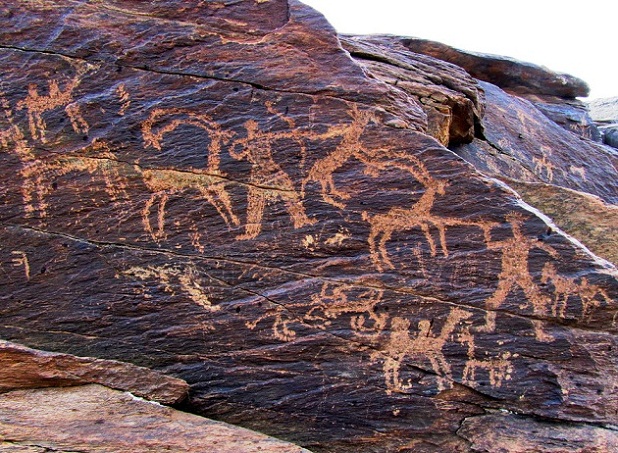Why in News?
- Petroglyph found in Konkan
For Prelims: Petroglyph, Petrograph, Petroform
Petroglyphs
- Petroglyphs are images created by removing part of a rock surface by incising, picking,carving, or abrading, as a form of rock art.
- The Petroglyph in Ratnagigri region are also known as katal shipa and years old.
What are geoglyphs?
- Geoglyphs are a form of prehistoric rock art, created on the surface of laterite plateaus(Sada in Marathi). They are made by removing a part of the rock surface through anincision, picking, carving or abrading. They can be in the form of rock paintings, etchings,cup marks and ring marks.
- The UNESCO listing mentions “Konkan geoglyphs.” However, elsewhere, the termpetroglyph (literally, “rock symbol/character”) is also used. As per the UNESCO listing,petroglyphs and geoglyphs share similarities as both require the skills of removing parts or engraving a symbol on the rock surface.
- Petroglyphs are drawn by removing part of a rock surface by incising, picking, carving orabrading.

Petroglyph vs Petrograph vs Petroforms
- The term petroglyph should not be confused with Petrograph and Petroforms.
- Petrograph is an image drawn or painted on a rock face.
- Petroforms are patterns and shapes made by many large rocks and boulders over the ground.
Significance
- In the medieval age, the Konkan coast was lined with important port towns. It has been reconstructed from epigraphs and contemporaneous records that it has a history of trade and contact with Europe, and even with the Roman Empire. But there was a big void regarding what went on here in prehistoric times. The findings of these petroglyphs can fill a huge gap in the history of the Konkan region.
- Petroglyphs in Ratnagiri region are not yet the evidence of a civilisation, as there is no evidence of writing, agricultural or economic activity, or of living arrangements or settlements which are the essential attributes of a civilization.
- In Maharashtra’s cultural records, there is no evidence of any art being practised until about 3,000 BCE, which is when the first mention of painted pots and clay figurines are found. That’s why these petroglyphs are a significant find for a better understanding of the history of this region and its artistic traditions.
- Some of the carvings depict rhinoceroses and hippos, two species that were never thought to be prevalent in this part of India. This carvings, however, suggest that the Konkan may have once been a lot like the rainforests where these animals are typically found.
